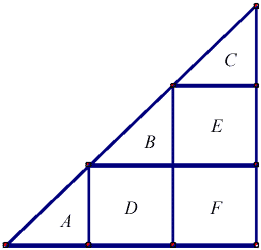Topic: Reflections, Rotations, Translations and Enlargements; Congruence and Similarity (Higher - Unit 3)
| Specification References: G1.8h G1.8h Understand congruence and similarity. Use similarity. Understand and use conditions for congruent triangles. |
Candidates should be able to:
- understand congruence
- identify shapes that are congruent
- understand and use conditions for congruent triangles
- recognise congruent shapes when rotated, reflected or in different orientations
- understand and use SSS, SAS, ASA and RHS conditions to prove the congruence of triangles using formal arguments, and to verify standard ruler and compass constructions
- understand similarity
- understand similarity of triangles and of other plane figures, and use this to make geometric inferences
- use similarity
- identify shapes that are similar, including all squares, all circles or all regular polygons with equal number of sides
- recognise similar shapes when rotated, reflected or in different orientations
Notes
Questions involving calculations of sides in similar shapes will not be set at Foundation tier.
Candidates will be expected to know the connection between the linear, area and volume scale factors of similar shapes and solids. Questions may be asked that exploit the relationship between weight and volume, area and cost of paint, etc.
Candidates can justify congruence by a variety of methods but their justifications must be complete. The use of SSS notation, etc. is not expected but will make the justification of congruence easier.
Scales will be given as, for example, 1cm represents 10km, or 1 : 100.
Examples
- These boxes are similar.

What is the ratio of the volume of box A to box B?
view more examples

